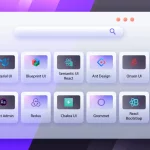
Eco-Friendly Wireframing: Sustainable Practices and Green Design Solutions
- Post
- August 7, 2023
- UI/UX Design, Web Design, Wireframing
- 0 Comments
In the realm of digital design, where innovation meets creativity, a growing concern for the environment has given rise to a new approach: eco-friendly wireframing. As designers and developers, we have a responsibility to create solutions that not only cater to user needs but also prioritize sustainability. In this comprehensive guide, we’ll delve into the world of eco-conscious design, exploring sustainable practices and green design solutions that can reshape the way we approach wireframing.
Understanding Eco-Friendly Wireframing
Embracing a Green Mindset in UI/UX Design
When it comes to creating wireframes for user interfaces (UI) and user experiences (UX), integrating environmentally friendly principles might not be the first thought that comes to mind. However, adopting a green mindset can significantly impact the design process. By considering the lifecycle of digital products, from conception to disposal, we open doors to innovative, sustainable solutions that minimize negative environmental footprints.
Sustainable Wireframing Practices
Minimizing Digital Waste
Digital waste is an often-overlooked concern. Just as we aim to reduce physical waste, we should prioritize minimizing the digital clutter produced during the design phase. This includes optimizing image sizes, eliminating unnecessary elements, and using efficient coding practices.
Low-Impact Material Selection
Incorporating sustainable materials into your digital designs can have a positive impact. Similar to using recycled materials in physical products, consider using design elements that have a smaller carbon footprint. This might involve selecting eco-friendly fonts, color palettes, and icon sets.
Energy-Efficient Design Elements
Designing with energy efficiency in mind is essential. Opt for animations and interactions that require less processing power, reducing the energy consumption of the final product. This not only benefits the environment but also contributes to a seamless user experience.
Streamlined User Flows
Creating wireframes that promote intuitive user flows is not only user-friendly but also eco-friendly. A streamlined user experience can reduce the time users spend navigating a website or app, minimizing energy consumption and overall digital waste.
Green Design Solutions in Wireframing
UI/UX Wireframe Tools with Sustainability in Mind
The choice of wireframe tools can make a difference. Look for tools that align with sustainable principles, such as those that promote minimalistic design, easy collaboration, and a focus on efficient user experiences.
Integrating Renewable Energy Concepts
Consider incorporating renewable energy concepts into your designs. Visual elements like solar panels or wind turbines can serve as metaphors for clean, sustainable energy sources, aligning the design with eco-friendly ideals.
Nature-Inspired Visuals
Bringing nature into the digital realm can create a calming, eco-friendly atmosphere. Incorporate nature-inspired visuals, such as organic shapes and natural textures, to establish a connection between the digital experience and the environment.
Interactive Eco-Education
Use wireframes as a platform for interactive eco-education. Incorporate sections that educate users about environmental issues, inspiring them to adopt sustainable practices in their own lives.
Final Words
Eco-friendly wireframing is not just a trend; it’s a paradigm shift that harmonizes innovative design with ecological responsibility. By embracing sustainable practices and green design solutions, we can pave the way for a more eco-conscious digital landscape, benefiting both users and the planet.
Commonly Asked Questions
Q1: Can eco-friendly wireframing really make a difference?
A: Absolutely! Small design choices, such as optimizing images and reducing energy-intensive animations, collectively contribute to a greener digital footprint.
Q2: How can I find UI/UX wireframe tools that prioritize sustainability?
A: Look for tools that emphasize minimalism, collaboration, and energy-efficient design features. Research user reviews and features to find the best fit for your eco-friendly design goals.
Q3: What’s the impact of energy-efficient design on user experience?
A: Energy-efficient design often leads to faster load times and smoother interactions, enhancing user experience. Users appreciate seamless functionality that conserves their device’s resources.
Q4: Are there specific industries that benefit most from eco-friendly wireframing?
A: Eco-friendly wireframing can benefit a wide range of industries. However, industries that focus on sustainability, such as renewable energy and eco-conscious brands, can particularly leverage these design principles.
Q5: How can I balance creative freedom with eco-friendly design constraints?
A: Creativity thrives within constraints. Think of eco-friendly design as an opportunity to innovate and find unique solutions that align with both your creative vision and sustainable ideals.




